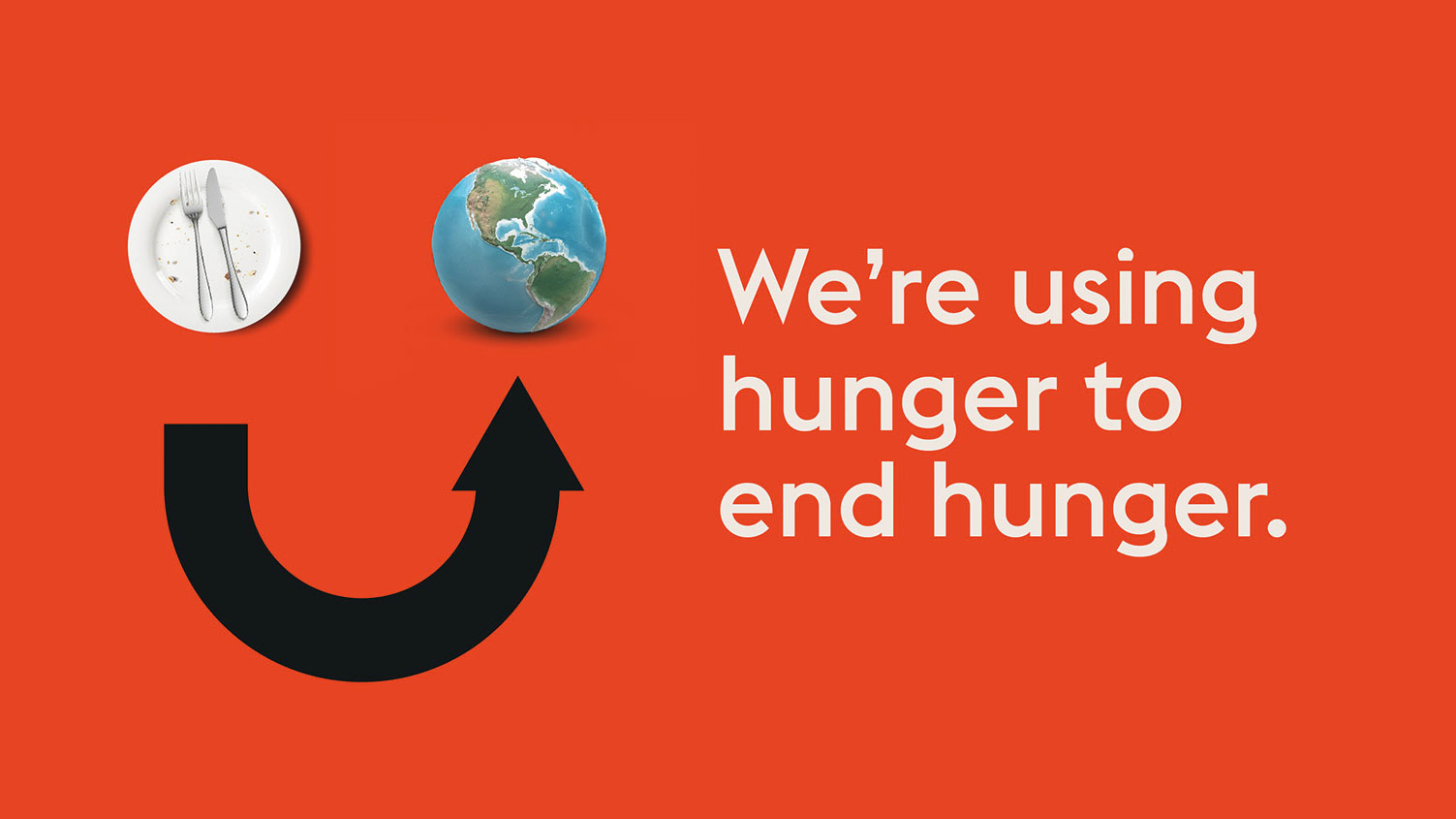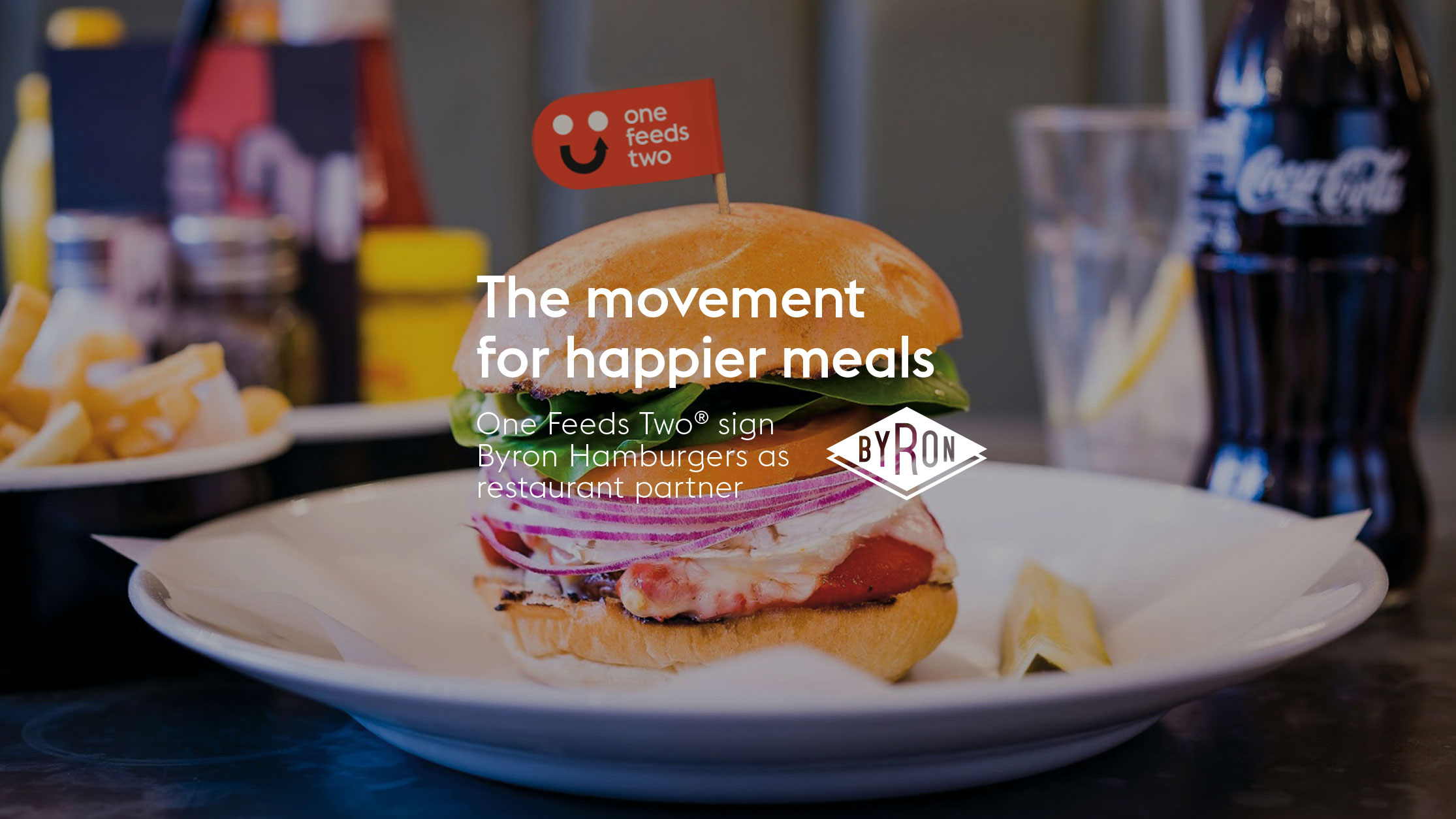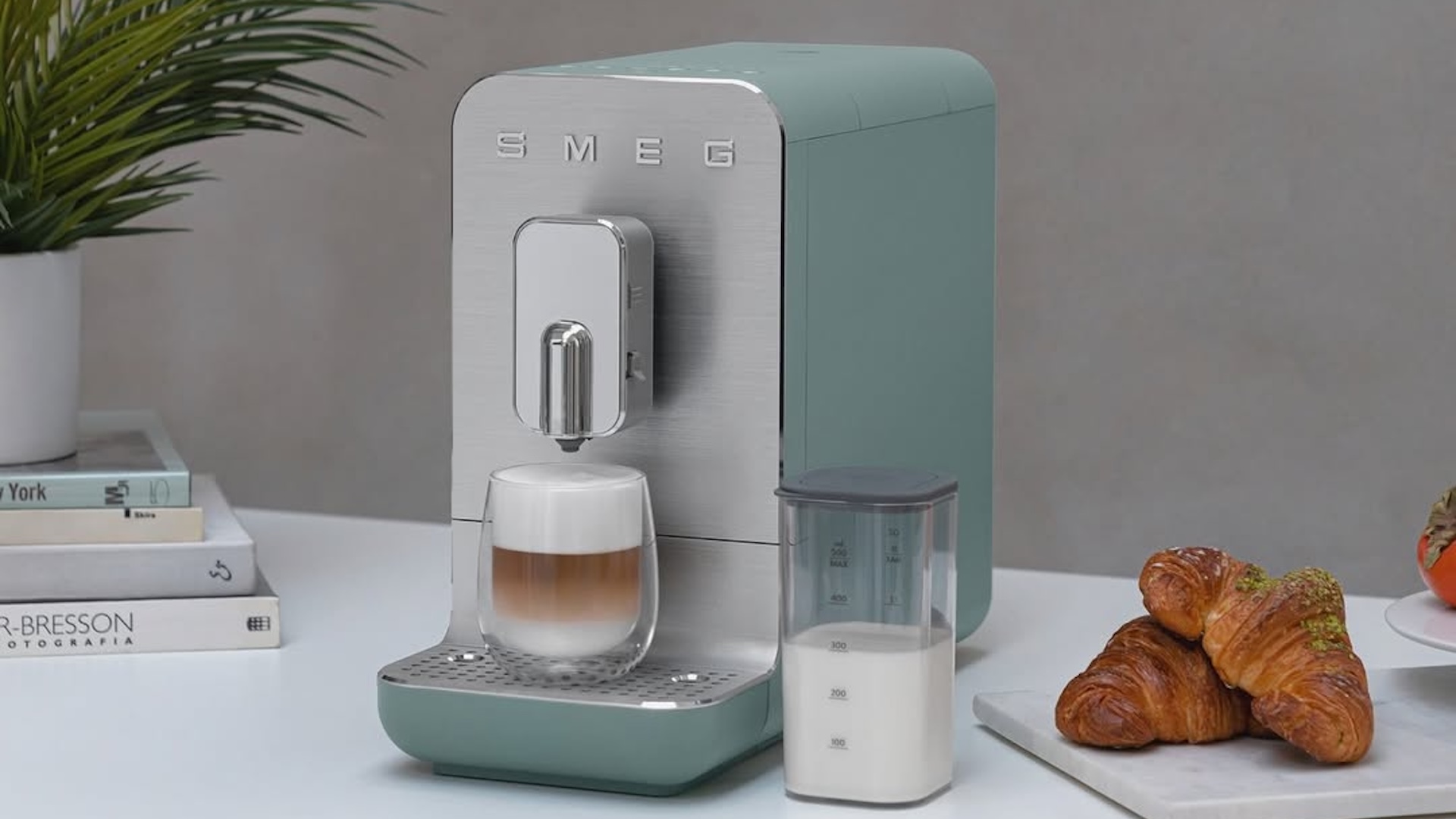Design for good: 8 ways to use your creativity to make a difference
Design for good is not just a 'buzzy' phrase. Now more than ever, designers recognise the importance of turning their hand to become a real force for good. Put into practice, creating in this way can enrich your agency and the work you do. A real emotional investment is often at the core – working with charities can be fulfilling and rewarding in ways that commercial work simply isn’t.
Creative studios of all sizes can make an effort to include charity work in their remit, and those that do it well are quite vocal about it. Commercial agencies
will always have one eye on the bottom line, and it can be difficult to identify which charities or social causes are a good fit for your team. Yet the knowledge that you’re making a real difference can be the catalyst for producing your best work (and can be a great way to spruce up your portfolio, see our favourite design portfolios for some inspiration on that front).
"It’s always motivating to work with organisations that are driven by doing more than just feeding their bottom line," says Jonathan Hubbard, creative director at London-based agency The Clearing. "The charity sector has interesting challenges. It’s very congested, which means that charities have to be very clear about who they are, what they do and why they exist, if they’re going to connect with supporters, partners and colleagues. Brand is vital in the charity sector."
Hubbard believes that to really work, charity brands have to create an emotional connection to their audiences. "They have to be clear about their cause, their vision and the problem they’re here to fix. They need to be built from a strong and motivating idea and have a soul. Charities used to operate their brands in a traditional ‘command and control’ way. Today, they need to be able to give control to anyone who wants to engage with the brand."
01. Don't rely on tugging the heartstrings

The Clearing worked with charity One Feeds Two to develop a brand with mass-market appeal to act as a credible commercial partner and an easy but impactful choice for consumers. The agency designed a simple, clear visual and verbal identity to attract new commercial partnerships and raise awareness of One Feeds Two’s cause. "The brand work had to move the project from one man-with-a-soup van, to a credible and desirable brand to engage national and international food partners and feeding charities to creating mass-market appeal for consumers," reveals Hubbard.
Consulting with charity founders, food partners and potential customers, the agency focused on its one-for-one proposition: connecting the process of buying food with the impact of providing food. "Rather than tugging on people’s heartstrings or making them feel guilty," says Hubbard, "the brand makes consumers feel good about their choice – summed up in the line ‘Join the movement for happier meals.’"

One Feeds Two has shaken up the congested charity sector by developing a credible brand with The Clearing that’s gained buy-in from national partners, including the likes of Bryon Burgers, Higgidy Pies, Mindful Chef and Baker Miller, to name but a few. The charity has delivered over six million school meals to children in poverty, putting more than 31,500 children through a year of school. Almost 99 per cent of these meal donations are from partner activity.
Daily design news, reviews, how-tos and more, as picked by the editors.
Cristina Fedi, former head of brand at Bryon Burgers, was won over by the One Feeds Two rebrand that caught her eye on Facebook. "We’d been looking for a charity partner that matched Byron in its individual and simple approach, with a similarly bold and eye-catching design. One Feeds Two stood out straight away: it had a strong logo that could communicate the idea without explanation, a beautifully designed visual identity that put a smile on our face, and we knew it could sit harmoniously alongside our own brand on our menus, leaflets and digital media."
Three years on, Byron has been responsible for delivering a million meals and putting over 5,000 children through school. "We’re proud to work with the charity," says Fedi.
02. User experience can be powerful

Focusing on health, science and tech, digital agency HMA works on a broad range of projects, from the design and development of websites, apps and other digital tools to the marketing of digital products and services. Its client list includes a number of charitable organisations, including stem4, which it first worked with in 2016 to reposition the Calm Harm app.
Conceived by clinical psychologist Dr Nihara Krause, the concept for the app was to help teenagers resist or manage the urge to self-harm through supportive, evidence-based dialectical behaviour therapy (DBT) techniques.
By the time HMA came on board, Calm Harm was already on the App Store and had been downloaded over 24,000 times, but the charity knew that there was potential to help a lot more young people.
"The primary focus of its brief was to deliver a more engaging user experience; making the design and visual elements of the app more appealing to its teenage target audience so that they would feel comfortable using it," explains HMA’s managing director Nicola Tiffany.
HMA brought together stakeholders, parents, young people, teachers and clinicians to carry out a strategic review of the existing app and co-produce a road map. "We looked at desired outputs, user journeys, visual concepts and security/privacy considerations leading to decisions about the user experience and tone of voice," explains Tiffany. "The app is based on the notion that the urge to self-harm is like a wave – feeling most powerful when you start wanting to do it. Once you surf the wave, the urge will fade.
"Users can learn to ‘surf the wave’ using five- or 15-minute exercises with content based on evidence-based DBT techniques and the characters (avatars) were created so that users could – if they chose to – have a ‘companion’ while surfing."
For more on building apps, see our how to make an app post.
03. Don't assume all charities are good

Tiffany continues: "While it seems like a saturated market, there’s a real need for good quality, evidence-based apps to support people in various clinical and non-clinical contexts." She discovered that, according to ORCHA (Organisation for the Review of Care and Health Apps) which carries out independent assessments of apps for NHS Digital, there are over 327,000 apps claiming to help us stay healthy or manage our health (rising 990 per cent from the 30,000 available in 2013), yet only around 112,000 of these apps are looked after, updated and kept fresh.
Delving deeper into the evaluation of these, only around 15,000 are secure, clinically safe or have met design standards. "It begs the question as to whether the creative industry should be selective about the projects they work on if they have the potential to do more harm than good," says Tiffany.
With nearly one million downloads in two years, the app has won several awards and raised the profile of both stem4 and HMA through the external recognition they’ve received. "Working within the health sector, and specifically for charitable organisations, provides a sense of worth for our project teams," reflects Tiffany. "They’re doing their job while also helping people, and seeing the difference that their work makes has a really positive impact on team morale.”
04. Get the right help

It’s a sentiment that’s echoed in the collaborative efforts of Grey London’s creative team, who together with executive producers at Thomas Thomas Films, conceived the idea of The Wayback after sharing their family experiences of Alzheimer’s.
"We all felt that we wanted to do something to make some kind of difference,"says Grey London's Dan Cole. "Alzheimer’s is a hugely frustrating disease for families to go through, as there seems so little that you can do. But once we started thinking about it, and talking about it, we started to have ideas of how we could help in some small way."
A group of friends who have worked on advertising projects together in the past, including Vodafone and News International, the team were inspired by the idea of virtual reality. "We began to wonder if such an immersive experience as VR could help people with dementia to remember parts of their lives – and if the experience might help trigger conversations with their loved ones and carers," reveals Cole.
With the idea for immersive video in mind the team started to brainstorm ideas of what time and place they could recreate in 360-degree film – with all the sights and sounds from a moment in time that would be familiar to millions. "We hoped that if we made the film as authentic as possible, so it really looked and sounded like a moment from their memory, that it would help spark some recollection," adds Cole.
"We settled on the Queen’s coronation in 1953 as a pilot film, purely because many people in the UK over 70 would have some recollection of this moment. There were thousands of street parties on the day so most people took part in some way.”
Interested in VR? See our best VR headsets buying guide.

Funding the project on Kickstarter was one of the biggest challenges faced by the team, which needed to raise £35,000 to make the pilot. "It involved countless phone calls and emails and tweets, and some very generous people. We realised that every single detail in the films could be a potential memory trigger for somebody, so getting all of this right was crucial.”
The team also consulted with Dr David Sheard, a leading dementia care expert, and pulled together a huge crew who sourced hundreds of outfits and props that would bring the day to life for the viewer. "Making a 360-degree film in the way that we felt was important is not cheap. From day one we were obsessed that the film should look so real that it almost felt like archive footage. So attention to detail was everything. Which meant we would need authentic wardrobe, sets and hundreds of extras!" The team also self-funded thousands of cardboard VR viewers to supply to care homes.
Following the film’s release the project won several awards including D&AD, SXSW, Creative Circle and The Art of Creativity award, giving it a permanent place in the British Film Archive.
05. Pick something you really care about
"Professionally, it’s been a real learning curve to be our own client, making decisions on everything from budget to PR," reflects Cole. "I think people are driven best by the causes closest to their heart, and to their own experiences." He argues that turning to people who have had personal experience of a cause and have a set of creative skills that could be utilised to bring about change should be an important stage in any social project.
"I think the creative industry is sometimes overlooked by government as an effective approach to tackling some of the toughest problems in society.”
06. Check out AIGA's Design for Good initiative

Creative director at Seattle-based agency Modern Species and AIGA member Gage Mitchell is part of a task force/committee of socially responsible and sustainable design thought leaders that drives the AIGA Design for Good initiative. This was formed to help provide the organisation and its members with clarity around what "design for good" means and how it differs from sustainable design, diversity and inclusion, and other AIGA social impact-focused initiatives.
Mitchell says sustainable change lives on after you’re gone. "That means teaching others what I know, connecting people and building teams where I can, and being an open book with all my resources, with the assumption that empowering others is more impactful that just doing what I can alone."
When a designer feels they want to make a difference, they know where to go first, where their talents will be respected and where we can match them with problems that need to be solved, explains AIGA executive director Richard Grefé. "If designers are involved in projects affecting the community, and are seen as a convener of groups that can solve community problems, then they’re going to be standing with attorneys, with accountants, with community leaders who see the way designer addresses a problem and the effectiveness of bringing creativity anytime you’re dealing with a problem that has many dimensions," says Grefé.
Path to Impact is a methodology that guides people through the process of designing for "good". It defines what’s meant by good, weaves in sustainability and inclusive design practices, and acts as a resource for people looking to lead communities and organisations through the process using different strategy and design thinking methods is available to AIGA members, explains Mitchell.
"In the AIGA Path to Impact workbook we suggest that design can aim to make an impact on the environment, society, culture and the economy. This basically means that we believe a strategic design process could be used to help teams of people make an impact on any problem," says Mitchell. "Once you stop thinking of design as an outcome (the thing we’re designing) and more as a process (framing the challenge, ideating and evaluating solutions, and so on) you find that you can use that process in all aspects of your life and work.”
07. You don't need to work for free

Working alongside Gage Mitchell on the AIGA Design for Good taskforce, Rule29’s founder and creative director Justin Ahrens argues that the biggest mindshift that needs to happen is thinking work needs to be pro bono. "In any project we do, there has to be some investment by the client. It may be nominal, but the point is for everyone involved to be committed. For all the work that we do in the non-profit space we offer process audits and budgetary guidance for organisations to be able to plan over time to pay for the work they are getting. It’s really about understanding value and education."
These days good charities need to view themselves more as businesses with a social objective. They need to generate income that they invest into the cause as well as building their brands and growing their people, says Hubbard. "Part of that investment in their brands is paying their partners, and although we might work at a reduced fee, we generally don’t work pro bono.”
Design for good is about using strategic design thinking and processes to bring about positive outcomes and impact.
Gage Mitchell
"I don’t think it’s super-difficult to find agencies willing to do the occasional pro bono work for non-profits, but I do think it’s rare to find agencies who know how to design for a sustainable, measurable impact,"continues Mitchell. "By that I mean that design for good isn’t merely about doing what you’ve always done; designing a brochure let’s say, but for a non-profit instead of a corporation. Design for good is about using strategic design thinking and processes to bring about positive outcomes and impact.
"That might mean telling the non-profit a brochure isn’t going to solve their problem and encouraging them to instead co-design a more impactful solution (which could be something else entirely) with their fellow stakeholders," says Mitchell, who argues designers should encourage their corporate clients to look beyond profit/sales goals and think about reducing upstream waste and/or adding additional value to the community they’re serving.
"Bottom line, while it’s not ‘difficult’ per say, it’s not currently the default mindset in the design community. But that’s what AIGA (and design studios like Modern Species) are working to change.”
08. Think about all your projects
Designing for good doesn’t necessarily mean designing for free or at a discount for a non-profit either, according to Mitchell. "You can design at your full rate for a for-profit corporate and still make a positive impact. So I would challenge creatives to think beyond the ‘occasional discounted work for a non-profit’ mentality and think more about how they can weave impact into every project, into their core values as a creative, and into their business model.
As designers, we have a lot of power to make a difference in the world, and with that power comes a responsibility to use that power wisely. If a superhero doesn’t limit their "pro bono" work to five per cent of their time, why should we?"
Positive change can only be brought about if a cause is clear, compelling and motivates participation, concludes Hubbard. "Good communication is at the heart of that change, so for us getting involved in projects where we can use our skills to further a cause we believe in is both rewarding and important."
This article originally appeared in issue 299 of Computer Arts, the world’s leading design magazine. Buy issue 299 or subscribe here.
Read more:

Lisa Hassell is a creative coach and the founder of Inkygoodness – a global community on a mission to connect, inspire, and empower the next generation of artists, illustrators and creative entrepreneurs.
